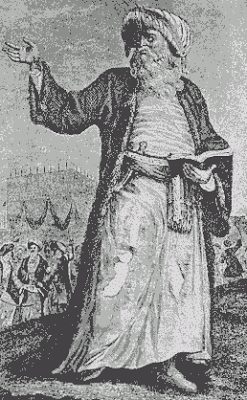UNRAVELING ISLAM pt 3
UNRAVELING ISLAM pt 3
IF MOHAMMAD HAD A SON WOULD ISLAM HAVE EVOLVED DIFFERENTLY?
If a son had existed, perhaps the whole history of Islam
would have been different. The discord, the civil war, the
rival caliphates, the split between Sunni and Shia—all might have been averted. But though Muhammad’s first
wife, Khadija, had given birth to two sons alongside four
daughters, both had died in infancy, and though
Muhammad had married nine more wives after her death,
not one had become pregnant.
There was surely talk about that in Medina, and in Mecca
too. Most of the nine marriages after Khadija had been
political; as was the custom among all rulers of the time,
they were diplomatic alliances. Muhammad had chosen his
wives carefully in order to bind the new community of Islam
together, creating ties of kinship across tribes and across
old hostilities. Just two years earlier, when Mecca had
finally accepted Islam and his leadership, he had even married Umm Habiba, whose father had led Mecca’s long
and bitter opposition to him. But marital alliances were
sealed by children. Mixed blood was new blood, free of the
old divisions. For a leader, this was the crucial point of marriage.
Most of Muhammad’s wives after Khadija did indeed
have children, but not by him. With the sole exception of the
youngest, Aisha, they were divorcées or widows, and their
children were by previous husbands. There was nothing
unusual in this. Wealthy men could have up to four wives at
the same time, with Muhammad allowed more in order to meet that need for political alliance, but women also often
had two, three, or even four husbands. The difference was
that where the men had many wives simultaneously, the
women married serially, either because of divorce—
women divorced as easily as men at the time—or because
their previous husbands had died, often in battle.
This meant that the whole of Mecca and Medina was a
ast interlocking web of kinship. Half brothers and half
sisters, in-laws and cousins, everyone at the center of Islam
was related at least three or four different ways to everyone
else. The result beggars the modern Western idea of
family. In seventh-century Arabia, it was a far-reaching web
of relationships that defied anything so neatly linear as a
family tree. It was more of a dense forest of vines, each one
spreading out tendrils that then curled around others only to
fold back in on themselves and reach out again in yet more
directions, binding together the members of the new
Islamic community in an intricate matrix of relationship no matter which tribe or clan they had been born into. But still,
blood mattered.
There were rumors that there was in fact one child born
to Muhammad after Khadija—born to Mariya the Copt, an
Egyptian slave whom Muhammad had freed and kept as a
concubine, away from the mosque compound—and that
indeed, the child had been a boy, named Ibrahim, the
Arabic for Abraham. But unlike the ancestor for whom he
was named, this boy never grew to adulthood. At seventeen months old, he died, and it remains unclear if he ever
actually existed or if, in a culture in which sons were
considered a sign of their fathers’ virility, he was instead a
kind of legendary assurance of the Prophet’s honor.
Certainly any of the wives crowded around Muhammad’s
sickbed would have given her eyeteeth—all her teeth, in
fact—to have had children by him. To have been the mother
of his children would have automatically granted her higher
status than any of the other wives. And to bear the son of
the Prophet? His natural heir? There could be no greater
honor. So every one of them surely did her utmost to
become pregnant by him, and none more than Aisha, the
first wife he had married after the death of Khadija.
The youngest of the nine, the favorite, and by far the most
controversial, Aisha was haunted by her childlessness. Like
the others, she must certainly have tried, but in vain.
erhaps it was a sign of Muhammad’s ultimate loyalty to
the memory of Khadija, the woman who had held him in her
arms when he was in shock, trembling from his first
encounter with the divine—the first revelation of the Quran —and assured him that he was indeed Rasul Allah, the Messenger of God. Perhaps only Khadija could be the matriarch, and only her eldest daughter, Fatima, could be
the mother of Muhammad’s treasured grandsons, Hasan
and Hussein.
There can be no question of impotence or sterility on Muhammad’s part; his children by Khadija were proof of
that. No question either of barrenness on the part of the
later wives, since all except Aisha had children by previous
husbands. Perhaps, then, the multiply married Prophet was
celibate. Or as Sunni theologians would argue in centuries
to come, perhaps this late-life childlessness was the price
of revelation. The Quran was the last and final word of God,
they said. There could be no more prophets after Muhammad, no male kin who could assert special insight
or closeness to the divine will, as the Shia would claim. This
is why Khadija’s two infant boys had to die; they could not
live lest they inherit the prophetic gene.
All we know for sure is that in all nine marriages after
Khadija, there was not a single pregnancy, let alone a son,
and this was a major problem.
